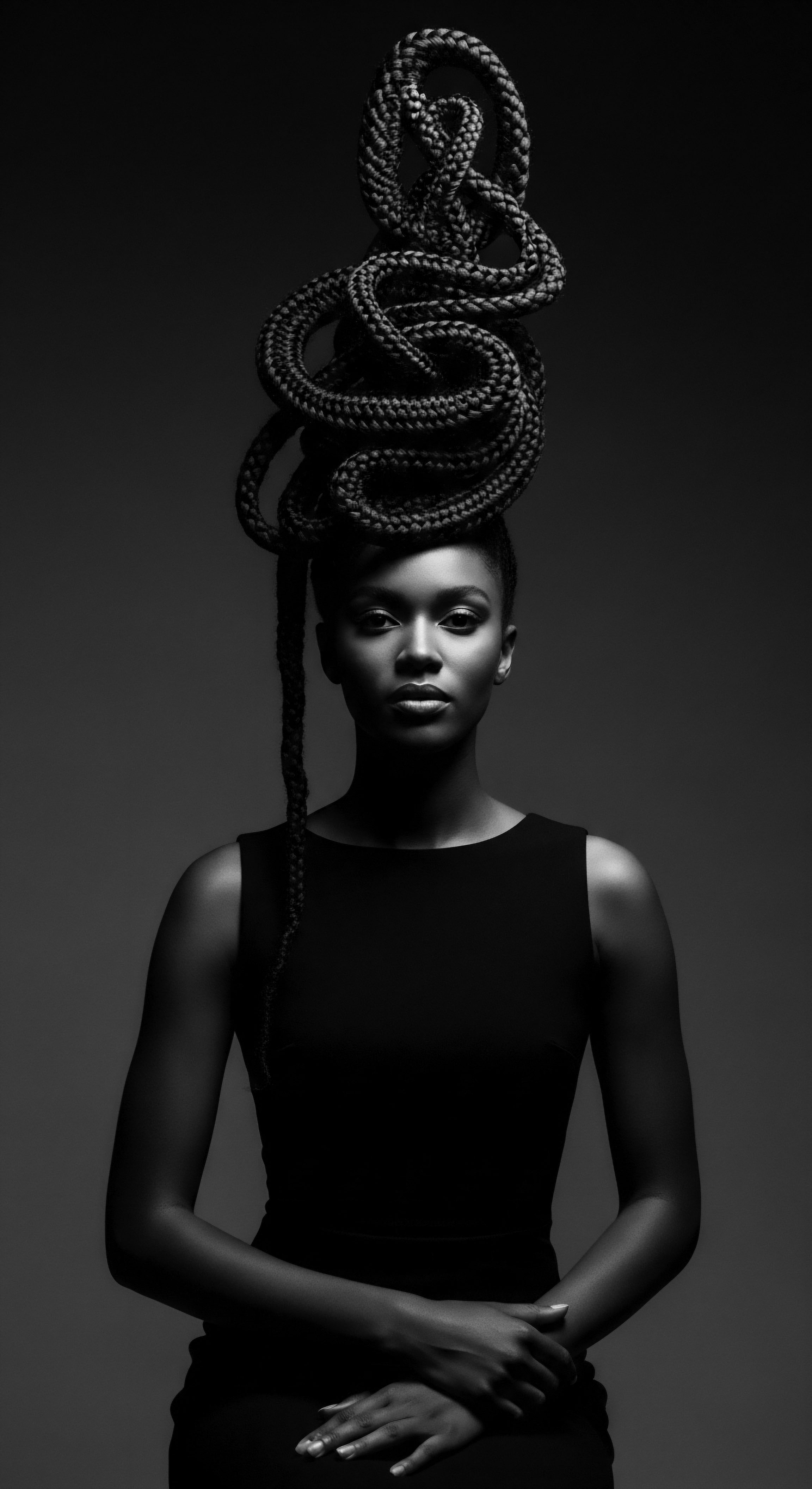
Fundamentals
The intricate dance between our inherent biological makeup and the vibrant tapestries of human culture shapes the very essence of who we are. When we speak of Bio-Cultural Research, particularly as it pertains to the crown we carry—our hair—we are peering into a profound interplay. It is a field of study that acknowledges our strands are not isolated biological entities, but rather living archives. They hold the echoes of genetics, passed down through ancestral lines, alongside the indelible marks of lived experience and the deeply ingrained traditions of care that have traveled through generations.
At its fundamental level, Bio-Cultural Research is an interpretation of human experience, considering both the biological underpinnings and the cultural frameworks that mold them. For textured hair, this translates into an understanding that the coil, the curl, the wave, the tightly bound helix—each unique expression of our biology—is simultaneously a canvas, a symbol, and a repository of cultural meaning. Our hair’s inherent structure, its capacity to resist or absorb moisture, its strength or fragility, are biological realities. How we nurture it, adorn it, style it, and perceive it, however, springs directly from the cultural soil in which our ancestors planted their roots.
Bio-Cultural Research views textured hair not merely as a biological structure but as a living testament to ancestral wisdom, cultural identity, and enduring traditions of care.

The Strand as a Repository of Life
Each hair strand, often dismissed as mere protein, actually carries a complex biological signature. Its shape, its density, its growth cycle, and its inherent hydration needs are all encoded within our genetic heritage. For those with Black and mixed-race hair, this genetic blueprint often translates to hair with distinct coiling patterns, a unique cuticle structure, and a predisposition to dryness or shrinkage.
Recognizing these biological specificities is the first step in a bio-cultural interpretation of hair care. It helps us understand why certain approaches, historically developed within communities, became mainstays.
Consider the simple act of moisturizing. Biologically, highly textured hair, with its elliptical cross-section and frequent bends, makes it harder for natural sebum to travel down the hair shaft, often leading to dryness. Culturally, this biological reality spurred generations of ancestral communities to develop sophisticated methods of moisturizing. They often utilized a diverse array of plant oils, butters, and humectants harvested from their immediate environments.
This was not random experimentation; it was an empirically refined system of care, passed down through verbal tradition, observation, and communal practice. The meaning of ‘care’ itself expanded beyond simple hygiene to become a ritual of preservation and honor.
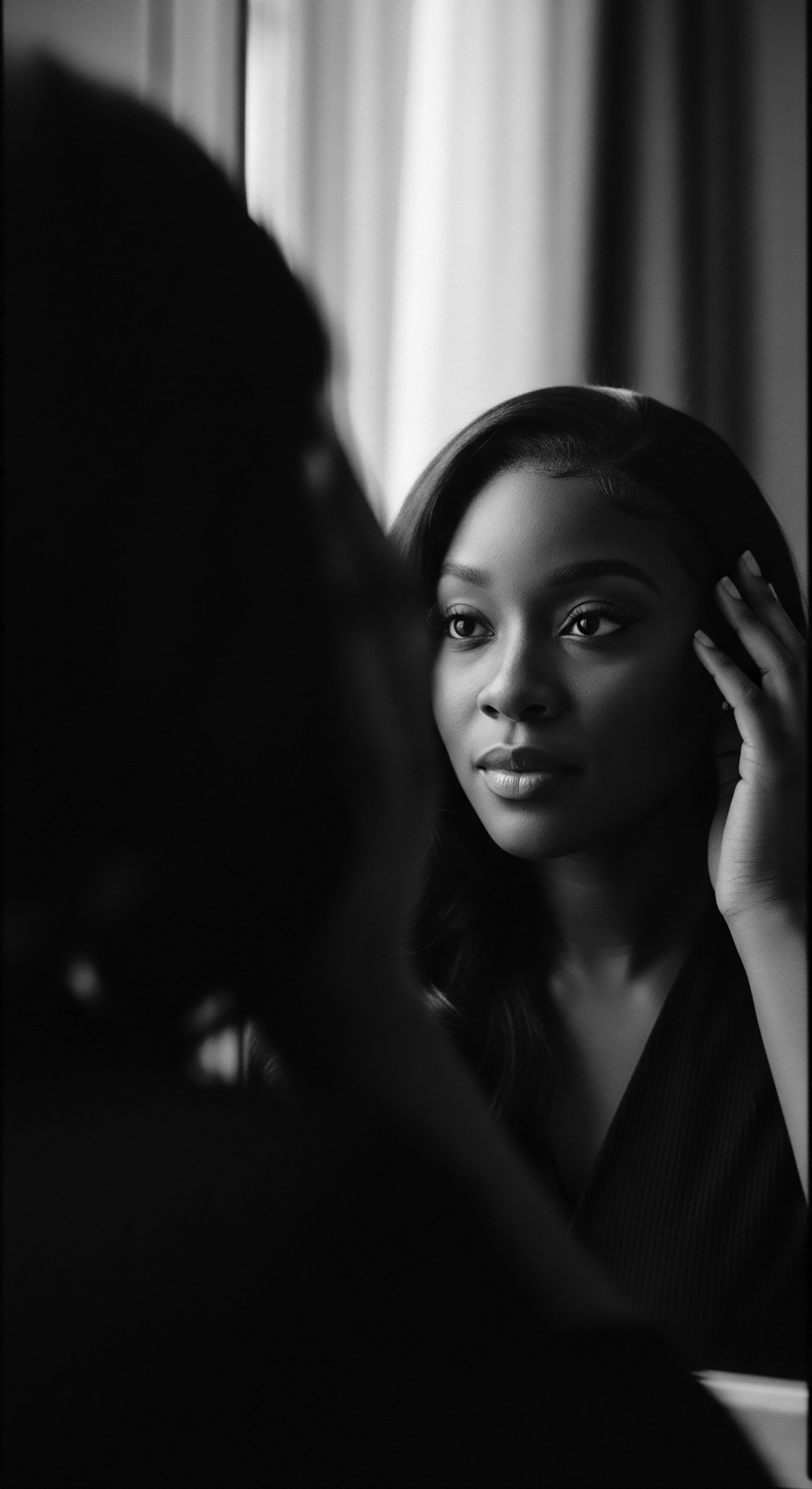
Ancestral Wisdom and Daily Rituals
The earliest forms of hair care were inherently bio-cultural. Ancient African civilizations, for instance, possessed an intuitive understanding of their hair’s biological needs, even without modern scientific terminology. They knew what specific plants offered conditioning, what oils provided protection against the sun and elements, and what styling methods best preserved moisture and prevented breakage. These care practices were interwoven with daily life, communal bonds, and spiritual expression.
- Shea Butter ❉ Derived from the nut of the African shea tree, this rich butter has been revered for centuries across West Africa for its deep moisturizing and protective qualities, particularly on skin and hair, guarding against arid climates.
- Chebe Powder ❉ Hailing from Chad, this unique blend of local herbs is traditionally applied to hair to strengthen strands, reduce breakage, and promote length retention, reflecting deep botanical knowledge.
- Argan Oil ❉ Sourced from the kernels of the Moroccan argan tree, this liquid gold has long been utilized for its nourishing and restorative effects on hair, celebrated for its ability to add luster and softness.
The definition of Bio-Cultural Research, therefore, begins with this basic understanding ❉ our biological hair characteristics have consistently shaped, and been shaped by, our cultural responses to them. It is an exploration of how the tangible attributes of our hair have inspired rituals, beliefs, and practices that extend far beyond mere aesthetics, rooting themselves in identity and collective memory.

Intermediate
Moving beyond the fundamentals, an intermediate comprehension of Bio-Cultural Research reveals a deeper interconnectedness between the physiological aspects of textured hair and the socio-historical currents that have defined its journey. Here, the meaning extends to examining how collective human experiences, often marked by migration, resilience, and transformation, have left their imprint on hair care traditions and perceptions across the diaspora. The biological reality of textured hair has never existed in a vacuum; it has always been interpreted, celebrated, suppressed, and redefined through the lens of cultural experience.
Consider the profound significance of hair braiding in many African societies, a practice that transcends simple beautification. Biologically, braiding offers a protective styling method, minimizing manipulation, preventing breakage, and shielding the hair from environmental aggressors. Culturally, these intricate styles served as complex visual languages. They communicated marital status, tribal affiliation, age, social standing, and even spiritual beliefs.
The biological practicality of preservation was inextricably linked to the cultural artistry of communication. This connection highlights the concept’s multifaceted nature, where biology informs culture and culture in turn shapes the understanding and treatment of biology.
The historical trajectory of textured hair showcases how biological attributes become imbued with layered cultural meanings, influencing both communal practices and personal identity.

The Impact of Displacement and Adaptation
The transatlantic slave trade, a period of immense bio-cultural disruption, profoundly altered the hair experiences of African people. Stripped of their traditional tools, natural ingredients, and the communal rituals that nurtured their hair, enslaved Africans faced immense challenges in maintaining hair health and cultural identity. Despite these oppressive conditions, ancestral knowledge persisted and adapted.
New materials were ingeniously repurposed—wool threads, discarded fibers, and even simple plant oils became tools of continuity. This period offers a poignant example of Bio-Cultural Research in action, demonstrating how biological needs (maintaining hair health) were met through remarkable cultural resilience and adaptation, often in secrecy.
The legacy of this period continues to influence contemporary hair care. The desire for length, the struggle against breakage, and the yearning for specific textures often reflect historical pressures and aspirations. Understanding this complex inheritance helps us grasp the complete meaning of our current hair journeys.
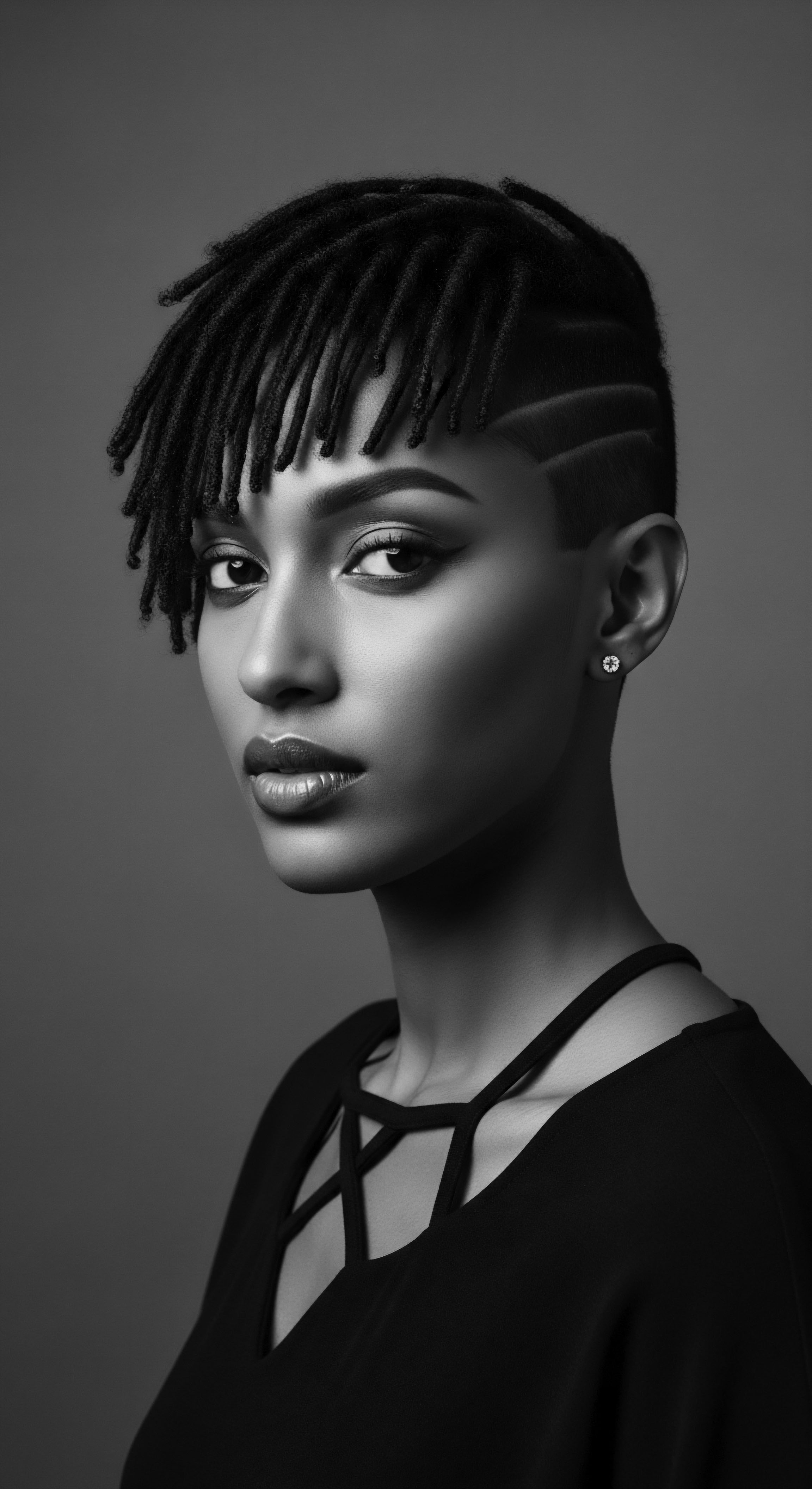
Textured Hair as a Symbol of Identity
The cultural designation of textured hair has been a dynamic force, shifting from reverence in ancient African societies to denigration during periods of enslavement and colonialism, and then to a powerful symbol of Black pride and liberation in the 20th and 21st centuries. The biological reality of coily or kinky hair remained constant, but its cultural interpretation transformed dramatically.
| Historical Period/Context Ancient African Civilizations |
| Biological Aspect (Hair Type) Varied Afro-textured hair structures |
| Cultural Interpretation/Practice Hair as a spiritual connection, identity marker, social status indicator, intricate styling rituals. |
| Historical Period/Context Transatlantic Slave Trade/Colonialism |
| Biological Aspect (Hair Type) Afro-textured hair challenges in new climates |
| Cultural Interpretation/Practice Hair often viewed as 'unruly,' forced concealment or alteration, a site of resistance or control. |
| Historical Period/Context Civil Rights/Black Power Era |
| Biological Aspect (Hair Type) Natural hair (Afro) |
| Cultural Interpretation/Practice Symbol of defiance, self-acceptance, political statement, return to ancestral aesthetics. |
| Historical Period/Context Contemporary Natural Hair Movement |
| Biological Aspect (Hair Type) All textured hair types |
| Cultural Interpretation/Practice Celebration of diversity, holistic wellness, cultural expression, scientific understanding of natural care. |
| Historical Period/Context The biological truth of textured hair endures, its cultural meaning evolves, reflecting collective struggles and triumphs. |
The natural hair movement, for instance, represents a profound re-claiming. It signifies a collective journey of many Black and mixed-race individuals to honor their biological hair in its natural state, shedding societal pressures to conform to eurocentric beauty standards. This movement is a living manifestation of Bio-Cultural Research, demonstrating how cultural values, self-perception, and a deeper understanding of hair biology intertwine to shape contemporary practices and promote holistic wellbeing. The intermediate definition deepens the initial understanding, highlighting the historical ebb and flow of meaning applied to biological traits, showcasing how groups adapt and find strength in their shared heritage.
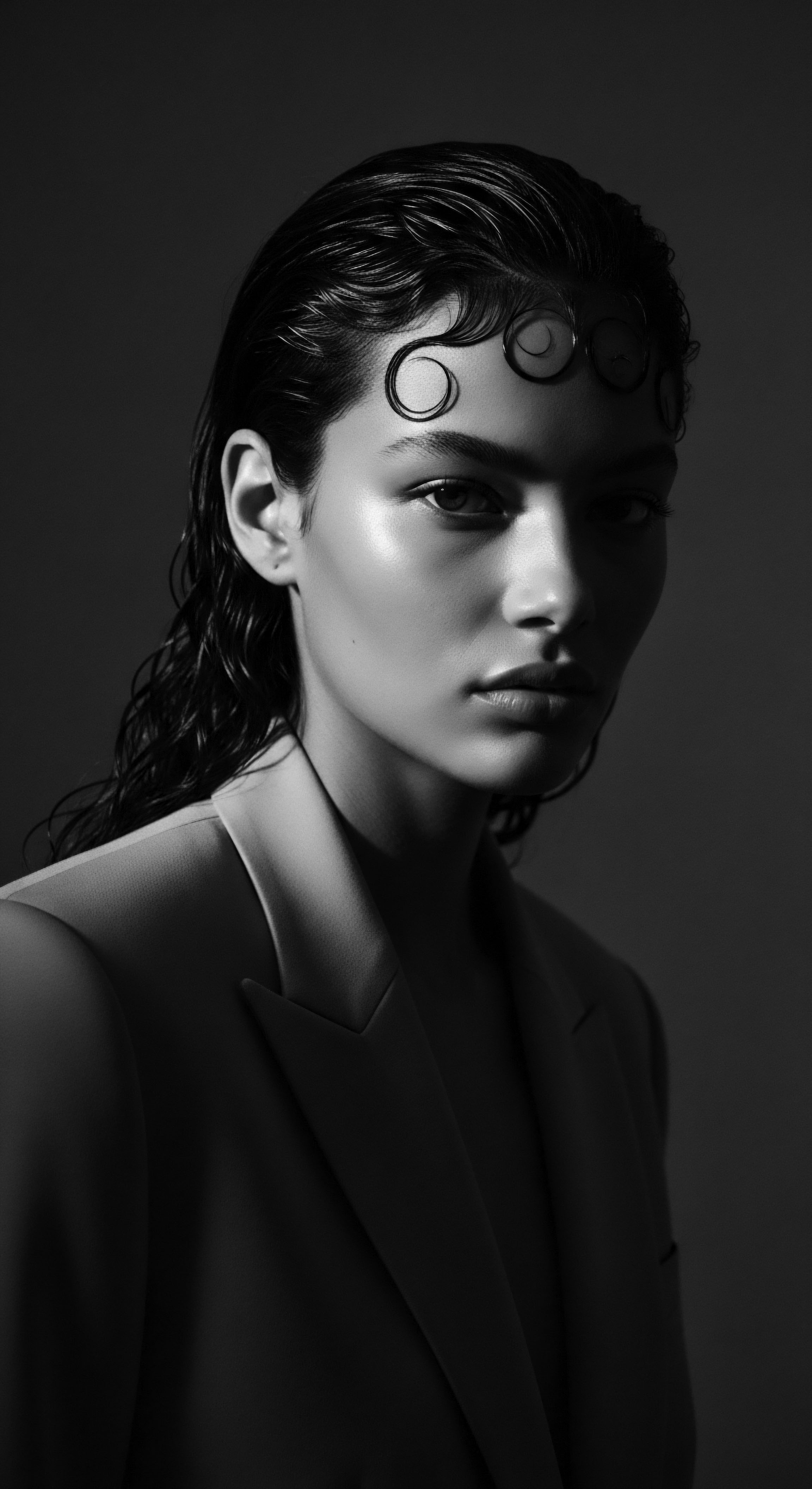
Academic
The academic delineation of Bio-Cultural Research as it pertains to textured hair heritage transcends simple observation, moving into a rigorous exploration of complex human-environment interactions. It is a field that seeks to meticulously delineate the mechanisms through which biological predispositions and environmental pressures coalesce with cultural responses, shaping not only physical traits but also social structures, identity constructs, and health outcomes. This scholarly inquiry necessitates an interdisciplinary approach, drawing from anthropology, human biology, sociology, genetics, and even psychology, to provide a comprehensive meaning. The concept emphasizes that hair, particularly textured hair, functions as a tangible artifact of human adaptation, cultural innovation, and historical endurance.
For individuals of African descent and those with mixed heritage, the meaning of Bio-Cultural Research becomes acutely significant. Their hair, a product of millennia of biological adaptation to diverse climates and environments, carries a distinctive morphological architecture. This includes, but is not limited to, an elliptical cross-section, variations in cuticle scale patterns, and a unique distribution of melanin granules.
These biological characteristics, while often lending themselves to magnificent volume and intricate styling possibilities, also present specific challenges regarding moisture retention and breakage. The cultural practices developed over generations to mitigate these biological realities — from specific styling techniques to the application of traditional botanical compounds — represent profound examples of bio-cultural co-evolution.
Academic Bio-Cultural Research of textured hair reveals a continuous feedback loop between genetic heritage, environmental adaptation, and cultural innovation, offering a sophisticated lens through which to comprehend hair’s role in human experience.
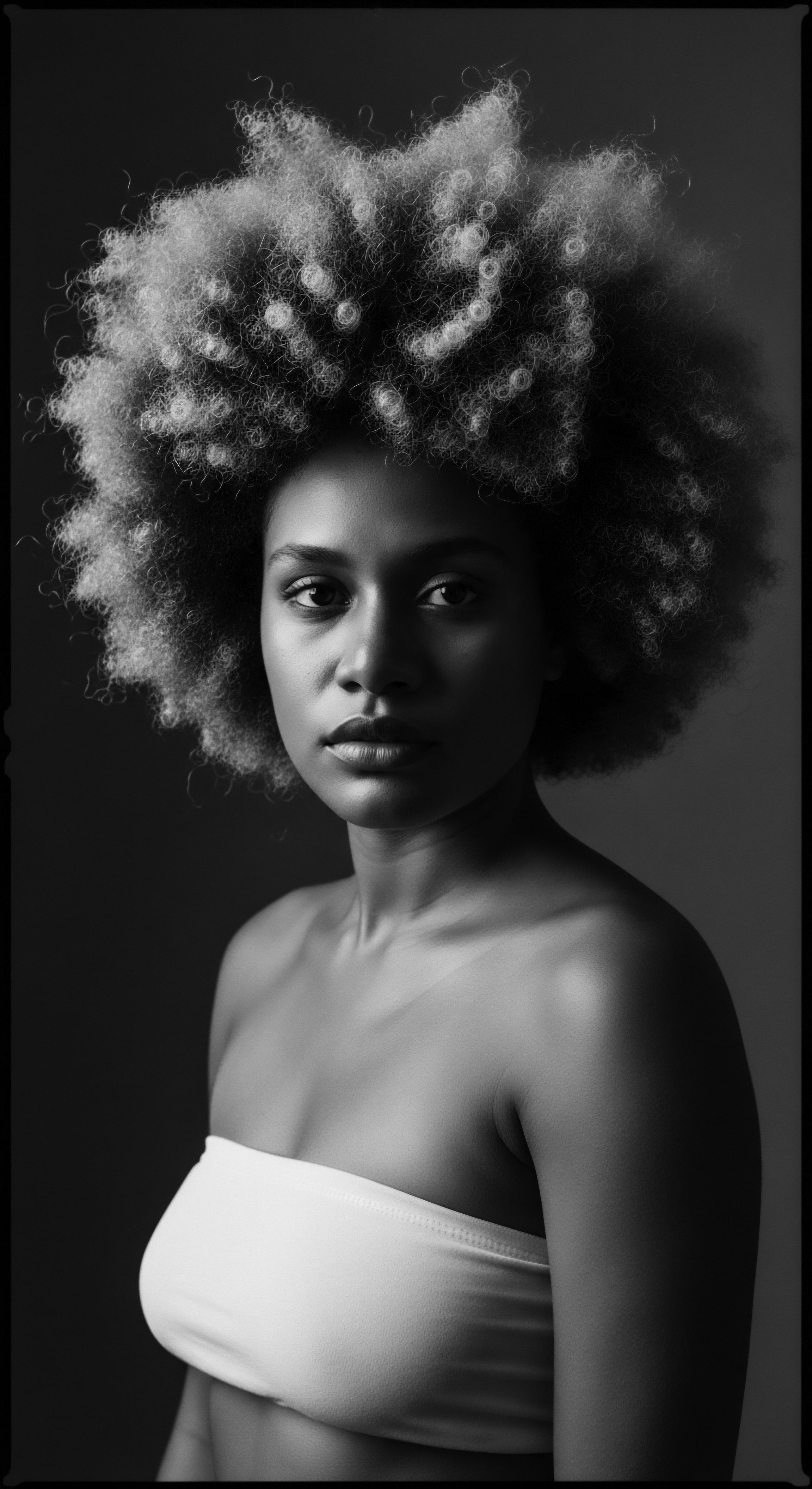
The Enduring Wisdom of Ancestral Practices ❉ The Mbalantu Example
To ground this academic discussion, consider the enduring hair traditions of the Mbalantu women of northern Namibia, a compelling example of advanced bio-cultural adaptation and practice. Their renowned hair rituals, particularly the cultivation of extraordinarily long, thick braids known as Eembuvi, are not merely aesthetic choices. They represent a deeply integrated system of bio-cultural understanding. Biologically, the Mbalantu region is arid and dusty, presenting environmental challenges to hair health.
Their hair, while naturally robust, requires specific care to prevent dryness and breakage over many decades of growth. The meticulous process of growing and maintaining these long braids, which can extend to the knees, involves the regular application of Otjize, a paste composed of butterfat and ochre.
Anthropological studies, such as those by Gewald (2009), illuminate how this practice is far more than cosmetic. The otjize serves as a biological protective agent, sealing the hair shaft, providing emollient properties, and creating a physical barrier against sun exposure and environmental pollutants. Culturally, the Eembuvi braids are steeped in profound social significance, marking rites of passage from puberty to marriage, signifying social status, and embodying generational continuity. Young girls begin their hair journey, and the length and condition of their Eembuvi reflect not only their personal dedication but also their familial lineage and adherence to communal norms.
This intricate system of hair cultivation, passed down through matriarchal lines, exemplifies an indigenous form of Bio-Cultural Research, where ancestral biological knowledge of hair structure and environmental conditions informed the creation of a sophisticated, culturally embedded hair care regimen that ensures both physiological integrity and social cohesion. It is an encapsulation of how a cultural practice, born from specific environmental and biological needs, becomes a fundamental pillar of identity and intergenerational transmission.
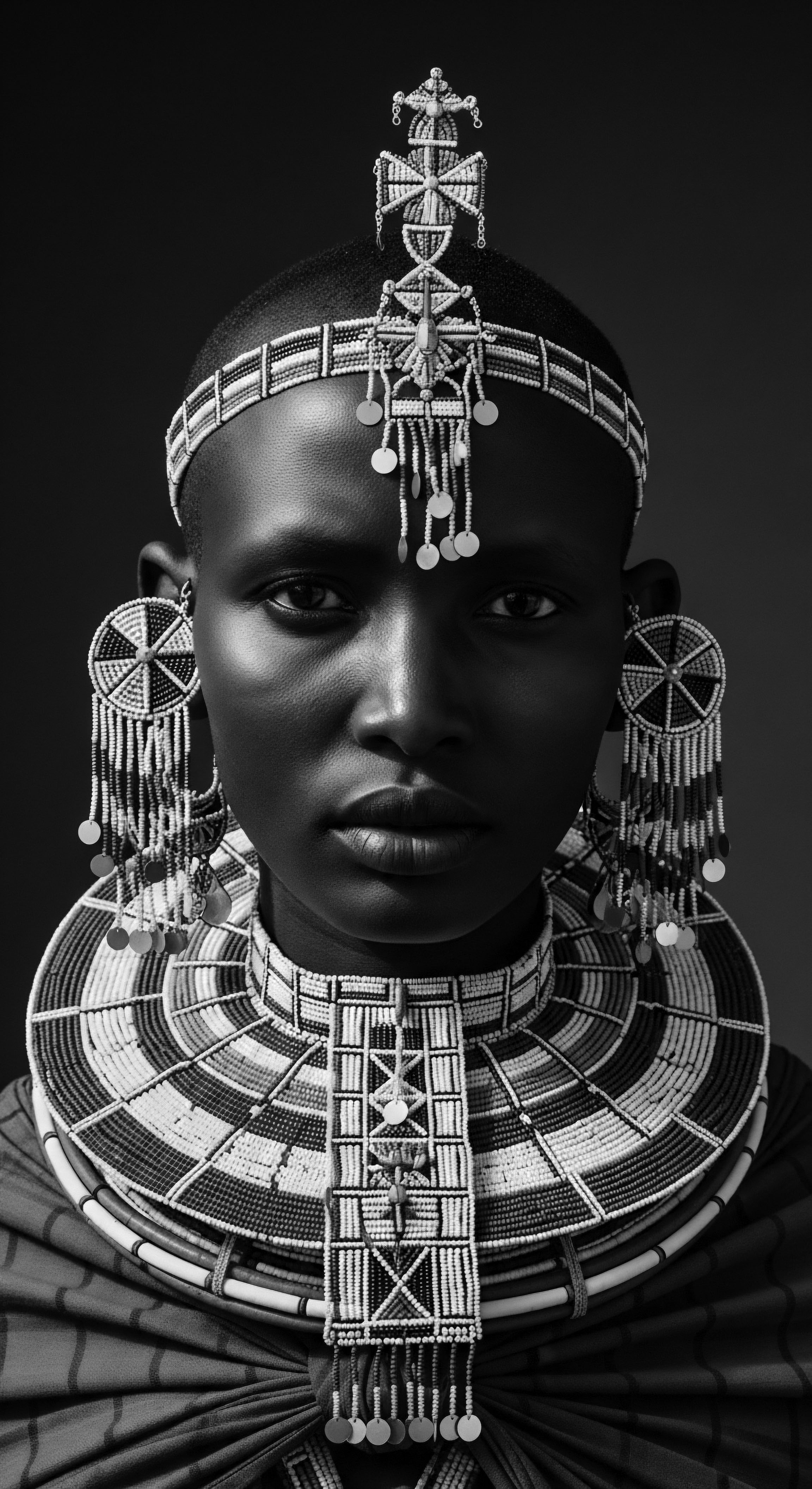
Intergenerational Epigenetics and Hair Identity
Furthermore, academic Bio-Cultural Research probes beyond direct care practices to examine the epigenetic influences that might shape hair health and perception. Epigenetics, the study of how environmental factors can influence gene expression without altering the underlying DNA sequence, offers a compelling avenue. While research is still burgeoning, preliminary studies suggest that chronic stress, nutritional deficiencies, and prolonged exposure to certain environmental toxins, all factors disproportionately affecting marginalized communities historically, can lead to epigenetic modifications. These changes may influence the expression of genes related to hair follicle development, keratin production, and melanin synthesis, potentially contributing to variations in hair health and resilience across generations.
Conversely, cultural practices of resilience, communal support, and the reclamation of hair as a source of pride may counteract these biological stressors. When individuals embrace and nurture their natural hair, they not only engage in a physical act of care but also participate in a psychological and sociological healing process. This act of self-acceptance and cultural affirmation can reduce stress, potentially fostering a more favorable epigenetic landscape. The meaning of Bio-Cultural Research here expands to consider how historical trauma and systemic oppression have left physiological and psychological imprints on individuals and communities, and how ancestral wisdom and cultural resurgence offer pathways for biological and spiritual restoration.
This deeper exploration validates the intuitive understanding present in many hair traditions that true hair health extends beyond surface-level aesthetics, connecting to our deepest histories and the vitality of our being. The implications of this research are far-reaching, highlighting the critical importance of honoring traditional care paradigms and promoting culturally affirming beauty practices as components of holistic wellbeing.
- Historical Trauma ❉ Chronic stress and oppression experienced by ancestors may leave epigenetic marks influencing physiological processes, including hair health, in descendant generations.
- Nutritional Shifts ❉ Changes in diet due to forced displacement or economic conditions can impact hair nutrient absorption and structural integrity, a biological response to cultural disruption.
- Cultural Affirmation ❉ The reclaiming of natural hair and traditional practices serves as a powerful psychological buffer against societal pressures, potentially mitigating biological stress responses.
The scholarly pursuit of Bio-Cultural Research thus recognizes that hair is not merely an anatomical feature but a dynamic interface where genetic inheritance, environmental pressures, and the intricate web of human culture intersect. It is a field committed to understanding how these forces collectively shape the meaning, experience, and destiny of textured hair. This scholarly perspective calls for a deeper acknowledgment of traditional ecological knowledge and its profound relevance to contemporary hair science, demonstrating that ancestral wisdom often predated and implicitly understood complex biological principles now being ‘discovered’ by modern research.
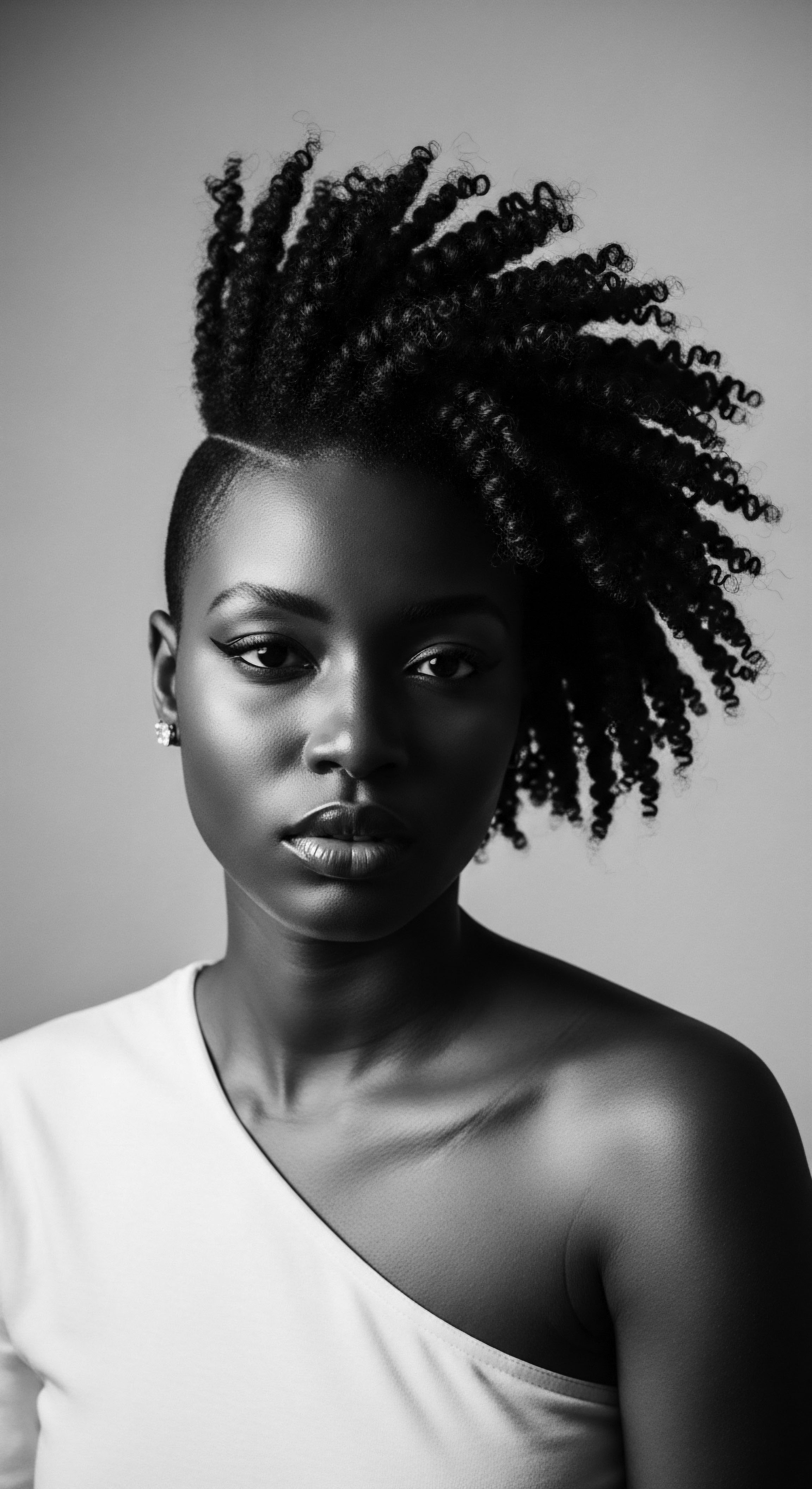
Reflection on the Heritage of Bio-Cultural Research
As we close this dialogue on Bio-Cultural Research, especially through the lens of textured hair, we are reminded that our strands are more than merely protein filaments emerging from the scalp. They are living legacies, brimming with the stories of those who came before us. Each coil, each kink, each wave whispers tales of resilience, ingenuity, and profound connection to the earth and to community. The Bio-Cultural Research approach invites us to listen to these whispers, to honor the journeys of our ancestors, and to recognize the inherent wisdom encoded in their care practices.
The path of understanding our hair’s deep heritage is not a solitary one; it is a communal walk, an unending discovery. It encourages us to perceive how the sun-drenched savannas shaped hair’s biological needs, how communal rituals forged bonds through shared grooming, and how generations adapted, creating beauty and meaning even in the face of immense adversity. The wisdom gleaned from centuries of care, passed down through whispers and hands-on teachings, continues to illuminate our contemporary choices, offering gentle guidance in a world often seeking quick fixes.
To truly comprehend our textured hair, then, is to undertake a soulful excavation of its past. It is to acknowledge that the biological truth of our hair is inextricably woven into the vibrant cultural narratives that have given it meaning, protection, and identity through time. This understanding allows us to stand in a place of profound respect for our lineage, nurturing our hair not only for its physiological wellbeing but also for its spiritual resonance, ensuring that the Soul of a Strand continues to echo with the enduring strength and beauty of our collective heritage.
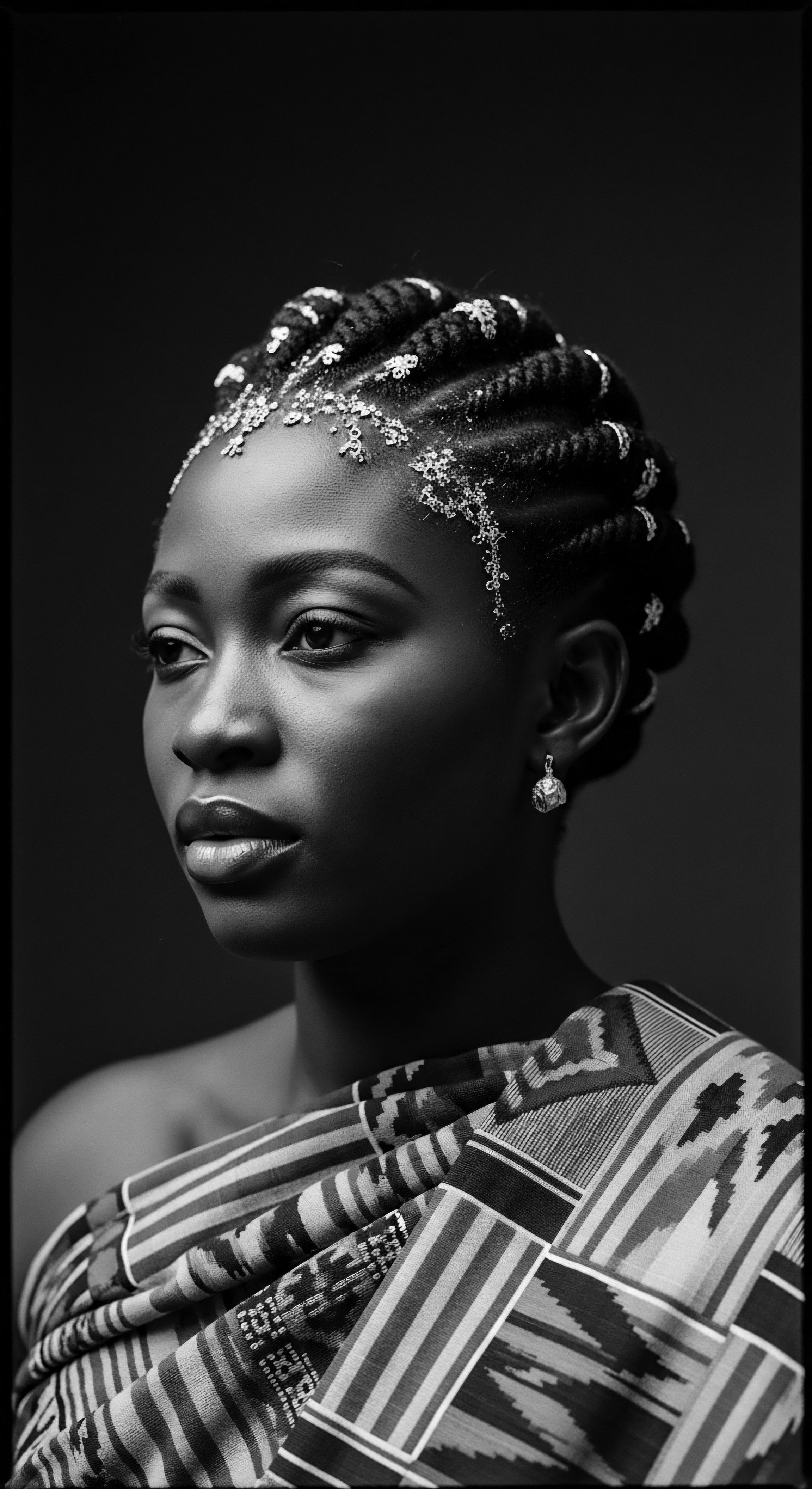
References
- Gewald, Jan-Bart. (2009). Hair. In B. D. D. C. K. G. (Ed.), The Oxford Encyclopedia of African Thought. Oxford University Press.
- Byrd, Ayana, & Tharps, Lori L. (2001). Hair Story ❉ Untangling the Roots of Black Hair in America. St. Martin’s Press.
- Mercer, Kobena. (1994). Welcome to the Jungle ❉ New Positions in Black Cultural Studies. Routledge.
- Banks, Ingrid. (2000). Hair Matters ❉ Beauty, Power, and Black Women’s Consciousness. New York University Press.
- Patel, L. R. & Sinha, S. (2008). Hair ❉ A Physical, Chemical, and Biological Perspective. CRC Press.
- Khumalo, Ncoza D. et al. (2007). African Hair Morphology ❉ A Review of the Hair of People of African Descent. Journal of Dermatology and Cosmetology.
- Durham, Robyn. (2013). The Science of Black Hair ❉ A Comprehensive Guide to Textured Hair Care. Nala International Inc.
- Hooks, Bell. (1995). Art on My Mind ❉ Visual Politics. The New Press.
